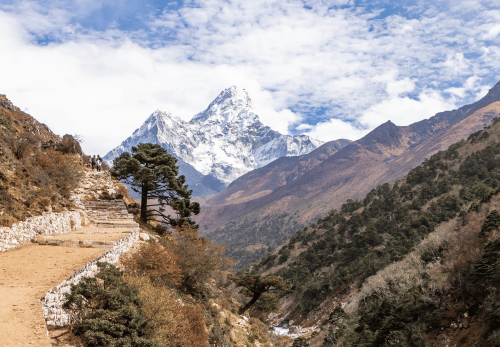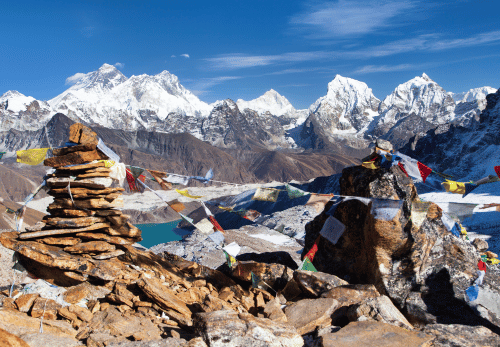About Trip
The Gokyo Lake Trek is a remarkable journey through the Everest region of Nepal, known for its stunning landscapes and tranquil beauty. This trek offers an alternative to the popular Everest Base Camp trek, providing trekkers with a unique experience of the Himalayas. The trek takes you through the Gokyo Valley, where you will encounter a series of beautiful turquoise lakes, with Gokyo Ri offering panoramic views of Everest, Lhotse, Makalu, and Cho Oyu.
Starting from Lukla, the trek follows the Dudh Koshi River and passes through traditional Sherpa villages like Namche Bazaar, Phortse, and Machhermo. Along the way, trekkers can enjoy the rich culture and hospitality of the Sherpa people, as well as visit ancient monasteries and marvel at the surrounding snow-capped peaks. The trail gradually ascends, allowing for proper acclimatization and ensuring trekkers can enjoy the journey without the risk of altitude sickness.
The highlight of the Gokyo Lake Trek is reaching the Gokyo Lakes, a series of six glacial-fed lakes that are considered sacred by both Hindus and Buddhists. The trek to Gokyo Ri, a nearby peak, is a challenging yet rewarding climb that offers some of the most spectacular views in the Himalayas. From the summit, trekkers can witness the majestic panorama of the Everest range and the vast Ngozumpa Glacier, the largest glacier in Nepal. This trek is a perfect blend of natural beauty, cultural immersion, and adventure, making it an unforgettable experience for all who embark on it.



